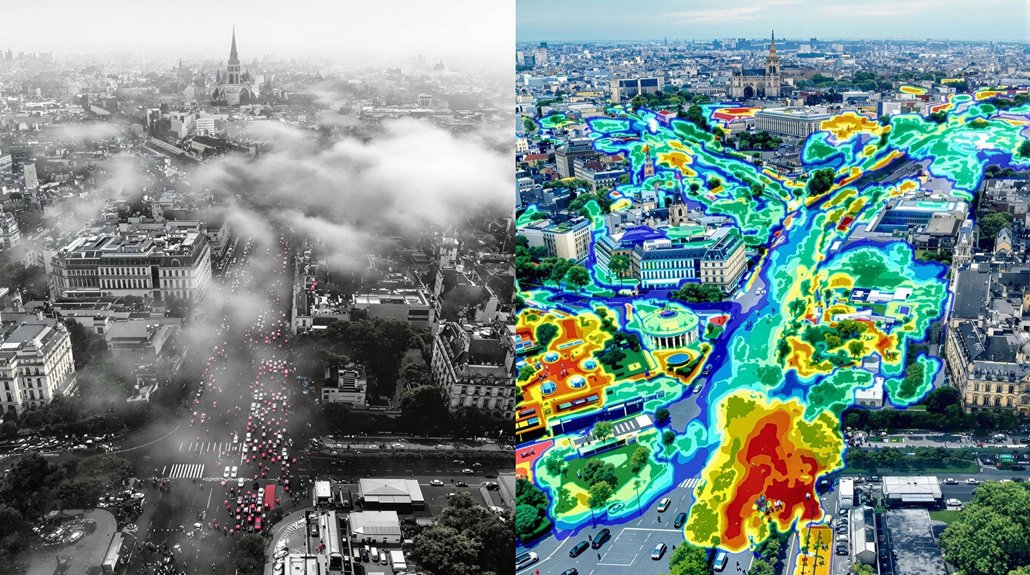Paris is taking bold steps to reduce pollution by banning most vehicles from its central districts starting April 2025. The initiative, backed by two-thirds of residents, has already removed over 10,000 parking spaces. Air quality maps show promising improvements in affected areas. Local businesses worry about customer access, but city officials remain committed to creating more pedestrian-friendly zones. This transformation could set a new standard for major cities struggling with similar environmental challenges.
Major changes are coming to Paris as the city works to dramatically reduce car traffic in its historic center. Over the past decade, the French capital has already cut car traffic by 40%, but new plans go much further. Starting April 2025, most vehicles will be banned from the first four arrondissements, the city’s central districts, under the Limited Traffic Zone (LTZ) initiative.
Paris is transforming its historic heart into a largely car-free zone, extending its decade-long effort to reclaim streets for people.
The plan has strong public support, with 66% of Parisians voting in favor of the car ban in a recent poll. A six-month “educational phase” began in November 2024, giving drivers time to adapt before facing €135 fines for violations. Emergency services, public transportation, taxis, and residents with reduced mobility will retain access to the zone. Certain major roads like Place de la Concorde will be exempt, but most of the 500+ streets in central Paris will prioritize pedestrians and cyclists.
The city has already removed more than 10,000 parking spaces since 2020 and plans to eliminate 10,000 more. This shift in urban planning has helped boost cycling by 71% in the last four years. Paris aims to create car-free zones across 700 streets, transforming over 10% of the city’s roadways into pedestrian-friendly spaces.
Environmental benefits are expected to be substantial. Reduced vehicle traffic should lower noise levels and improve air quality in the dense city center. Mayor Anne Hidalgo is pursuing a 15-minute city concept where residents can access essential services within a quarter-hour walk or bike ride. The initiative aligns with the green revolution happening worldwide as cities work to reduce fossil fuel dependency. Similar programs in European cities like Oslo and Ghent have shown positive long-term effects on urban health and livability.
The change hasn’t been without controversy. Local businesses worry about customer access, and some critics point to the referendum’s low turnout of just 4%. There are also concerns about increased traffic in neighborhoods surrounding the car-free zones.
Despite these challenges, Paris continues to push forward with its vision of a more sustainable urban environment. The transformation represents one of the most ambitious car-reduction efforts in any major global city, potentially setting a new standard for urban planning worldwide.








